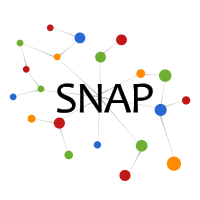Drug-drug interaction network
Dataset information
This is a network of interactions betweeen drugs, which are approved by the U.S. Food and Drug Administration. Nodes represent drugs and edges represent drug interactions. Drug-drug interactions occur when the pharmacologic effect of a one drug is altered by the action of another drug, leading to unpredictable clinical effects such as adverse drug reactions. When several drugs are administered together, there might be a greater possibility of adverse drug reactions as one drug can increase or decrease the effect of another drug. It is thus crucial to identify drug-drug interactions, especially during drug development, when one needs to identify interactions between a new candidate drug and drugs that are already on the market.
| Dataset statistics | |
|---|---|
| Nodes | 1514 |
| Edges | 48514 |
| Nodes in largest SCC | 1510 |
| Fraction of nodes in largest SCC | 1.000000 |
| Edges in largest SCC | 48512 |
| Fraction of edges in largest SCC | 0.999959 |
| Average clustering coefficient | 0.303968 |
| Number of triangles | 5457046 |
| Fraction of closed triangles | 0.104354 |
| Diameter (longest shortest path) | 7 |
| 90-percentile effective diameter | 2.977804 |
Drug-drug interactions are extracted from drug labels and scientific publications.
References
- DrugBank 5.0: a major update to the DrugBank database for 2018. Wishart, David S., et al. Nucleic Acids Research. 2017.
- MINER: Gigascale multimodal biological network. Stanford SNAP Group. GitHub Repository. 2017.
Files
| File | Size | Description |
|---|---|---|
| ChCh-Miner_durgbank-chem-chem.tsv.gz | 1.5MB | Drug-drug interaction network (edgelist) |



